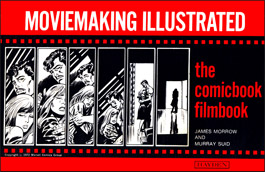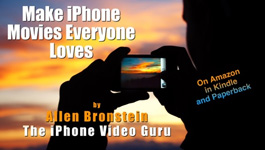We all have stories to tell. The challenge is knowing how to tell them. If you’re looking for a quick lesson–how does 60 seconds sound?–you’ll do well to study “Blind Date.” In this Mobile Film Festival 2017 entry, Xavier Inbona and Pierre-Francois de Mont-Serrat employ seven cinematic storytelling techniques that can enhance just about any fiction film.
While “Blind Date” is a silent film, the methods use apply equally well to movies with spoken dialogue. But this film does illustrate how much can be conveyed without spoken words.
Technique 1. Mark the beginning by changing the focus from blurry to crisp. The FilMiC Pro camera app makes this easy to do as you’ll see in this Epic Guide tutorial. The end of the film is similarly marked when the focus changes from crisp to blurred.
Technique 2. Movie the camera closer when introducing a key character. This is called pushing in. You can do it using a wheeled dolly or using a zoom lens.
Technique 3. Use props to provide background (exposition) in a dramatic way. In this case, a quick shot of the protagonist’s phone gives the audience all the context that is needed. Later, the simple act of retrieving the female lead character’s cane lets the audience know that the woman is blind.
Technique 4. Involve the audience in a character’s life with a reverse angle shot: First show the character looking at someone or something, then get behind the character and shoot toward what the character sees (in this case, the man’s blind date).
Technique 5. Create a sense of reality by including one or more background actors. While the bartender does nothing special, his presence adds authenticity to the location. He also happens to be the co-director.
Technique 6. Allow the actor’s expressions to convey thought. Notice how the actor shifts his gaze and slightly moves his lips to let us know that he’s trying to decide whether or not to approach the young woman. For her part, the woman wordlessly conveys a range of emotions—disappointment, fear, interest, and joy—for example, her wide-eyed reaction to the man’s approach.
Technique 7. Look for reaction shots. A brilliant example occurs when the woman touches the man’s face and he smiles, letting us know that he values her touch.
One thing that makes short movies valuable learning resources is that you can look at them again and again. We think if you watch “Blind Date” two or three times, you’ll discover even more cinematic storytelling devices that will enhance your own work.



 Previous post
Previous post
 Next post
Next post





